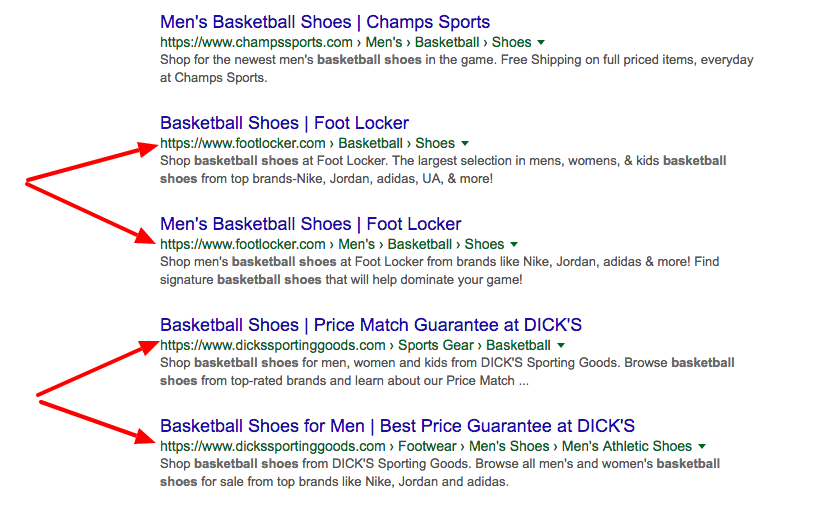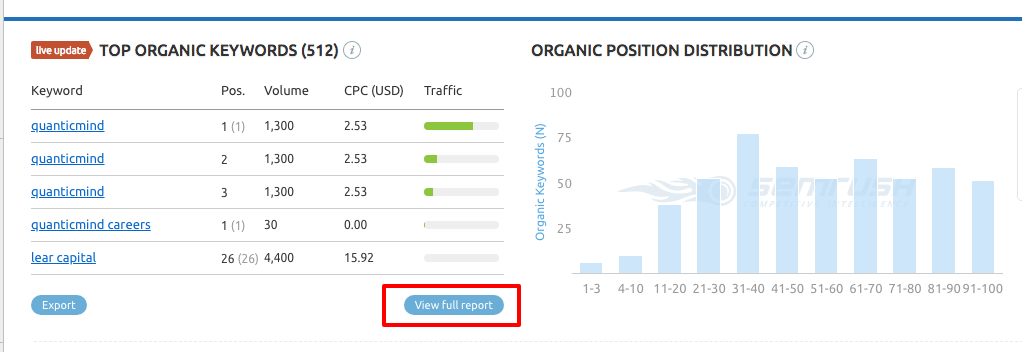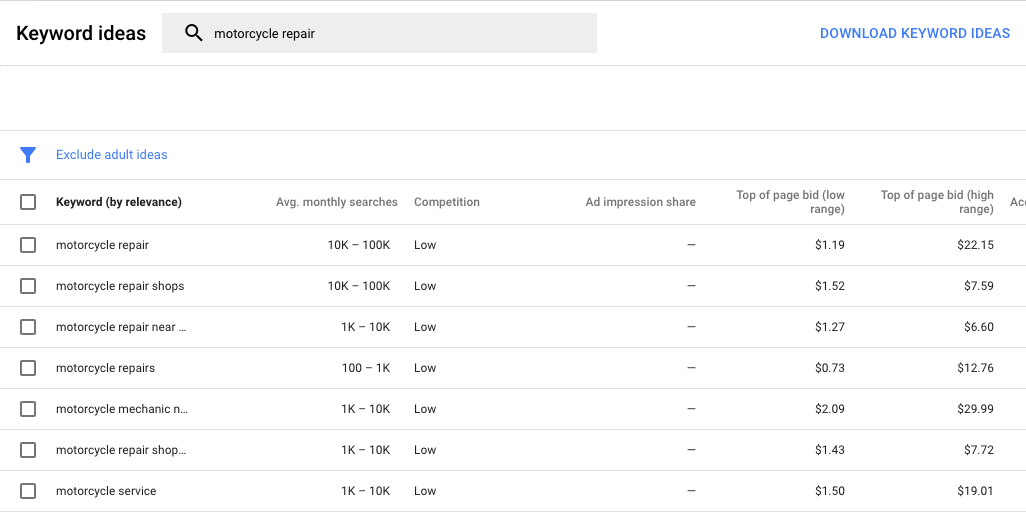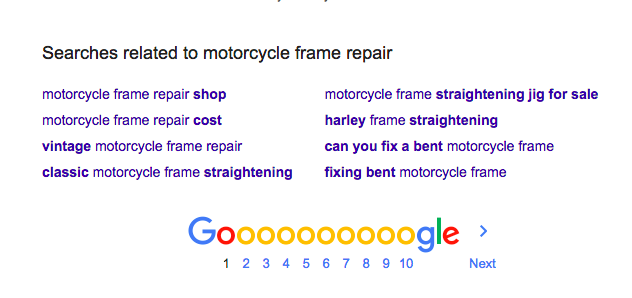Discover how brands use consistent cues, smart sequencing, and emotion to build memory that strengthens long-term results.

Prioritizing investment in SEO vs PPC is far from a new challenge for marketers today. Each technique is a valuable way to reach your target audience. However, both require careful attention to optimize so that your marketing can start benefiting from them.
If you want to improve your SEM strategy overall, here’s everything you need to know about prioritizing SEO vs PPC.
PPC has its strengths and so does SEO, but very few businesses can invest 100% in both from day one. Here are a few reasons why your business might want to prioritize SEO first:
You probably already know search engines (especially Google) are one of the most common platforms people use to access information on the internet. If you fail to have a presence in search engine results, you’re missing out on a huge potential channel to reach your target audience.
Sure, using PPC ads is an easy way to jump to the top of search results without investing in all that organic optimization. But consider: between 70% and 80% of users completely ignore paid advertisements when they use a search engine. There’s a growing number of consumers who don’t put any stock in advertisements. SEO is a way to reach them without direct promotion.
Most search engine users today understand that Google considers the authority of domains when delivering search results to users. If a page appears on the first page of search results for a query, users trust the content is truthful and from a source that people have a lot of confidence in.
That’s why getting your pages to rank well in search results is a great way to increase your brand authority. In fact, 50% of visitors are more likely to click a result if the brand appears multiple times in search results.

Unlike PPC advertising, where you have to pay for each click to your content, SEO is completely free. Create quality, relevant content and build up the right ranking signals for it to get search engine visibility without spending a penny.
That said, the efforts you make to optimize for SEO can cost a lot of money in and of itself. The only difference is there’s no minimum threshold to get visibility, like with PPC ads. If you’re working with a lean marketing budget, SEO is the obvious choice to start with because you can limit your financial investment and still start getting results.
PPC ads usually target very specific search queries to drive sales or encourage searchers to click through and become leads. That seriously limits your keyword targeting opportunities compared to SEO.
If you host a blog on your website, you can target long-tail keywords related to questions people ask about your industry. Considering that 50% of search queries are four words or longer, targeting long-tail keywords with SEO gives you more opportunity to appeal to the needs and interests of search engines users.
It takes a lot of time and effort to build up an effective presence in organic search results, but once you do, it’s going to keep on delivering results. Building up your domain authority through link building and other tactics makes it much easier to get new content you publish to rank well quickly. Meanwhile valuable cornerstone content you published years ago can still bring in a steady stream of traffic every month, with no extra effort on your part.
PPC, on the other hand, is like flipping a light switch. You either invest money and get results or you don’t. There’s no opportunity to benefit from long-term residual traffic like with SEO.
SEO might seem like the obvious choice to prioritize in the beginning, but PPC has some unique traits and benefits that make it appealing for certain kinds of businesses and marketing goals. Here are a few factors to consider:
There’s no denying that PPC ads get prime real estate in search results. They appear above the fold, above organic results, and are often the first thing people see after hitting “Enter” on their search query. It’s no wonder that search ads can increase brand awareness by 80%, according to Google.
Even if users don’t click on your PPC ads, your message can impact what they click on in organic results below, or impact their next query search. Getting your brand name and products/services in front of people’s eyes is an important digital marketing strategy for just about every kind of business.
Google AdWords provides you with all the information you need to better optimize your ads through your Quality Score. Quality Score looks at your ad relevance, landing page experience, and click through rate and tells you which ones are negatively impacting your ad quality.
When you use Campaign Experiments, AdWords also makes it easy to A/B test different ad elements (Headline, CTA, extensions, etc.) so you can identify exactly what kind of message resonates with your audience. There’s even options to rotate your ad variations and auto-optimize by displaying the most effective ones.

Optimizing for SEO isn’t as intuitive as PPC ads. People create quality, compelling content all the time but can’t get traffic to it because of domain authority, keyword targeting, or other issues they can’t identify. Optimizing for SEO takes a lot of troubleshooting and long-term analysis to identify the best content elements for your audience.
If your main goal is to get visibility for your products and increase conversions, PPC is an obvious choice. Paid ads get 65% of all clicks for high commercial intent searches.
While people often ignore ads when searching for information online, they have no qualms clicking when they’re making a purchase soon. Targeting search engine users who are already looking to buy is a great way skip organic competition and drive more sales from PPC ads.
While there are certain factors that work together to determine organic pagerank, it’s really more of an art than a science. That’s because Google changes its algorithms 500 times per year, so the strategies you use to optimize today can become irrelevant tomorrow.
With PPC ads, you have much more control over performance. You can choose what keywords you do/don’t want your ads to appear for, how much you want to bid for various keywords, what your ad will look like in search results, etc.
With organic search, you’re often left wondering what factors will help your pages improve and maintain rank long term.
It’s true that optimizing for PPC requires some upfront financial investment. Especially if you work in a competitive industry, getting ad visibility can be quite expensive. But as long as you target relevant keywords with quality content, you should be able to quickly realize a return on your investment. PPC site visitors are 50% more likely to purchase something than organic site visitors.
After you invest in creating and promoting your SEO content, you have to wait for it to start ranking. And even then the revenue you drive from organic traffic might not match what you could achieve with PPC in much less time.
So if you want to maximize your PPC ROAS, you should focus on product promotion to see quick results.
Now that you understand the pros and cons of each strategy, hopefully you have a better idea of which is the most valuable for your business at this point. It mostly boils down to your industry, budget, and goals. For example, if you’re an ecommerce seller looking to drive sales quickly, PPC is the obvious option to start with. If you run a startup with a shoestring budget, SEO is the more economical strategy to start with.
The final verdict for the majority of businesses is that they need a little of both. Despite their differences, SEO and PPC actually complement each other quite well. In fact, marketers that use both SEO and PPC ads average 25% more clicks and 27% more profits than those who use one technique.
That said, very few businesses can hit the ground running with complete SEO and PPC strategies at one time. It’s best to pick and prioritize how you invest in the beginning so you can grow and improve results long-terms.
Here’s how you can make the best of both worlds with SEO vs. PPC:
Assuming you’re not marketing a brand new site, it’s quite likely you have pages that already rank well for certain keywords. Instead of starting from square one with your organic optimization, boost the SEO of pages that are already ranking well. This will free up more of your budget and time for other SEM activities.
To see what keywords you’re already ranking well for, you can use SEMRush. Go to their main page and type in your domain name. Then it will return an overview of your domain analytics.
If you don’t have a SEMRush subscription, don’t worry. You can get 10 free reports by creating a free account. Once you’ve done that, scroll down to where it says “Top organic keywords” and click “View Full Report.”

Then it will return a full report of your pages’ rankings for various keywords in search results:

Sort the data by “position” and you can see what keywords and associated pages already appear on the first page of search results. Look past these to the ones that appear on pages 2-10 of search results for a given keyword.
These are your opportunities. Since the vast majority of people never go past the first page of search results, doing anything you can to bump these listings up to page 1 can have a big impact on visibility and traffic.
Look for ways to improve this content to rank better. For example, you can promote it to get more non-search traffic and high quality backlinks, update the content so it’s fresh and relevant, or make efforts to improve your page speed or other user experience factors.
While the low hanging fruit keywords might not always be the most important ones for your marketing goals, taking the time to optimize for them is one way to get quick results while you work on creating new content around keywords you don’t rank for at all.
Of course you should be targeting your most financially valuable keywords with SEO, but most businesses can’t afford to wait to build organic rank to start driving revenue from their site pages. That’s where PPC can help.
Save your PPC budget to focus on the keywords that are most likely to drive revenue for your business (that you can then reinvest in better SEO and PPC). These are going to be your bottom-of-the-funnel keywords.
Bottom-of-the-funnel queries imply users have already done their research and are ready to convert/buy. Say you just launched an ecommerce store that sells water shoes but don’t yet have the budget to target all the relevant product keywords. You could skip over top-of-the-funnel awareness keywords (e.g. “water socks vs water shoes”) and focus on keywords that imply a readiness to buy (e.g. “buy water shoes” or “water shoes best price”).
Here are a few more examples of keywords/modifiers that imply purchase intent:
That said, which keywords are most financially valuable to your business really depends on your unique products/services. If you’re a consultant trying to sell tickets to your annual workshop, then any keywords related to your workshop would be important to target.
Besides targeting keywords your pages already rank for, you can also target low competition keywords to expand your SEO efforts. Low competition keywords should be easier to rank for, while you target high competition ($$$) keywords with PPC.
Long-tail keywords are usually ultra-relevant search queries that have much lower competition than keywords with high commercial intent. To find some relevant ones for your business, you can use AdWords Keyword Planner to start.
Type in a base keyword related to your niche (e.g. “motorcycle repair”), and Keyword Planner will return a list of relevant related keywords, including helpful information like search volume and competition:

Once you have a list of relevant keywords, you can turn to a long tail keyword research tool to expand on them for SEO. Keywordtool.io, Answer the Public, and Longtail Pro are popular options. Or you could rely on Google’s native Auto Suggest. Type a root keyword you got from Keyword Planner (e.g. “motorcycle frame repair”) into Google then scroll down to related searches to get ideas:

Lastly, you can use your SEO and PPC strategies together to nurture leads at various touchpoints. Say someone finds your blog through a search engine and consumes some top-of-the-funnel content. You can use PPC to remarket to them through the Google Display Network, Facebook, or another third party advertising service.
Use these ads to only target people who have visited your site and/or consumed specific content and it shouldn’t take up too much of your advertising budget. That’s the beauty of PPC — you can control exactly who sees your ads and how much you spend. And since you’re focusing on warm leads with your remarketing ads, there’s more opportunity to drive revenue from your investment.
Don’t have the budget or resources to invest fully in PPC or SEO ? You don't have to pit them against each other. Both strategies have their strengths and weaknesses. Smart marketers use both in unison to fill in the gaps and develop a robust search engine marketing strategy overall.
Rely on your business model and unique goals to inform what to invest in first. Then employ the tips above to get the best of both worlds using PPC and SEO.